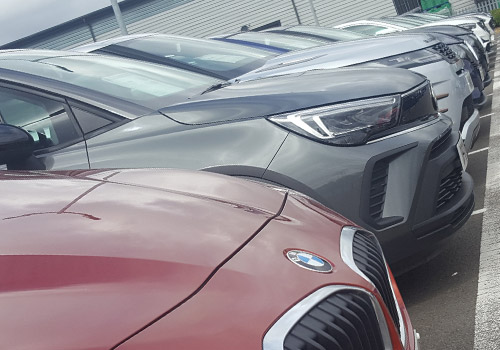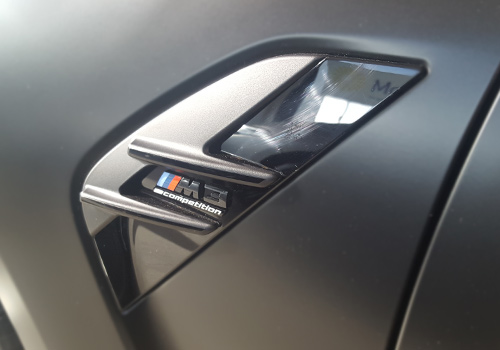Consistency in identifying vehicles
What might make more sense to the customer is to list vehicles by make and model, but unless the rental company can guarantee that the customer will get the make and model believe they’re reserving, it could lead to confusion when they arrive to pick up a Ford Focus and are handed the keys to a Kia Seed or a Seat Leon.
Obviously by using terms such as “or similar” we avoid being tied to customer expectations of specific makes and models being reserved, and that’s where using group identifiers such as A, B, C and so on can help. However, one car rental brand could have groups A and B under the Small
category, another have a Group A listed under the Mini
category, and a Group B under Economy
Should this matter to customers who simply want to rent a car?
There are still price conscious customers who want a good deal, and good deals are often decided on after making some comparisons.
How, for example, can a customer decide whether reserving a Vauxhall Corsa (or similar) directly through Avis, Hertz or Europcar represents better value for money, or to book from one of those same car rental brands via a broker or aggregator when there is inconsistence in vehicle group and category naming?
Industry standard vehicle classification
Certainly at the core of vehicle classification there should be an industry standard which takes factors such as type, number of doors, transmission, fuel and air con into account. That’s why SIPP codes (Standard Interline Passenger Procedure) and ACRISS codes (Association of Car Rental Industry Systems and Standards) are useful.
For the avoidance of confusion, the difference between the ACRISS Car Classification system and SIPP codes can be found on acriss.org which states:
SIPP (Standard Interline Passenger Procedure) codes is the four-letter abbreviations that identify the major features of a rental car. The ACRISS car classification matrix is derived from the original SIPP codes which was successfully used for years by the GDS (Global Distribution Systems) using the same category, type, transmission and fuel/AC used in the matrix today. ACRISS expanded on the original SIPP coding in 2006 adding the Elite categories and recently expanding on the definitions/differences for Electric/Hybrid cars. The SIPP acronym is still used in North America.
For simplicity and consistency, references to SIPP codes will be used for the remainder of this article.
SIPP codes
SIPP codes are a standard in the car rental industry to enable customers to easily compare different models of vehicles, but few car rental brands and broker websites actually display the codes.
Understandably, the average customer would not know what is meant by CCMN, CMMR or LDAR which could be displayed within the vehicle information panels, but it could provide a reliable means for a customer to identify and make comparisons for similarly classified vehicles between car rental brands and broker platforms.
It is worth noting, however, that the vehicles with the same SIPP code could be classed under different groups depending on the country of rental. Examples are shown further down on this page under Examples using SIPP codes
Car Classification Code Vehicle Matrix
Below is the Car Classification Code Vehicle Matrix, sourced from acriss.org showing how the codes refer to the chassis type and features of a vehicle.
- 1st character = vehicle category, based on size, power and luxury factor.
- 2nd character = vehicle type, such as car (inc number of doors) van, SUV, coupe, convertible, etc.
- 3rd character = transmission type (manual/auto) and whether the vehicle is two wheel drive (2WD), four wheel drive (4WD) or all wheel drive (AWD)
- 4th character = fuel type (petrol, diesel, electric, hybrid) and whether the vehicle has air condition (A/C)*
* Note that as electric and hybrid vehicles include A/C as standard, that differentiator has been removed from the classification matrix
CATEGORY
- M: Mini
- N: Mini Elite
- E: Economy
- H: Economy Elite
- C: Compact
- D: Compact Elite
- I: Intermediate
- J: Intermediate Elite
- S: Standard
- R: Standard Elite
- F: Fullsize
- G: Fullsize Elite
- P: Premium
- U: Premium Elite
- L: Luxury
- W: Luxury Elite
- O: Oversize
- X: Special
TYPE
- B: 2-3 Door car
- C: 2/4 Door car
- D: 4-5 Door car
- W: Wagon/Estate
- V: Passenger Van
- L: Limousine/Sedan
- S: Sport
- T: Convertible
- F: SUV
- J: Open Air All Terrain
- X: Special
- P: Pick-up (single/extended cab) 2 door
- Q: Pick-up (double cab) 4 door
- Z: Special Offer Car
- E: Coupe
- M: Monospace
- R: Recreational Vehicle
- H: Motor Home
- Y: 2 Wheel Vehicle
- N: Roadster
- G: Crossover
- K: Commercial Van/Truck
TRANSMISSION / DRIVE
- M: Manual Unspecified Drive
- N: Manual 4WD
- C: Manual AWD
- A: Auto Unspecified Drive
- B: Auto 4WD
- D: Auto AWD
FUEL / AIRCON
- R: Unspec'd Fuel/Power +A/C
- N: Unspec'd Fuel/Power no A/C
- D: Diesel +A/C
- Q: Diesel No A/C
- H: Hybrid
- I: Hybrid Plug in
- E: Electric Vehicle
- C: Electric Vehicle
- L: LPG/Comp'd Gas +A/C
- S: LPG/Comp'd Gas No A/C
- A: Hydrogen +A/C
- B: Hydrogen No A/C
- M: Multi Fuel/Power +A/C
- F: Multi fuel/power No A/C
- V: Petrol +A/C
- Z: Petrol No A/C
- U: Ethanol +A/C
- X: Ethanol No A/C
PASSENGER VAN CODING
- IV: 6+ Seats
- JV: Elite 6+ Seats
- SV: 7+ seats
- RV: Elite 7+ Seats
- FV: 7+ Seats, plus more space
- GV: Elite 7+ Seats plus more space
- PV: 8+ Seats
- UV: Elite 8+ Seats
- LV: 9+ Seats
COMMERCIAL/CARGO VAN CAPACITY (TONNES)
- Mini: 0.0 – 1.5
- Economy: 1.5 – 2.0
- Compact: 2.0 – 2.5
- Intermediate: 2.5 – 3.0
- Standard: 3.0 – 3.5
- Fullsize: 3.5+
Examples using SIPP codes
Using the above identification methods, examples could include:
- MCMR: (Mini, 2-4 Door, Manual, Aircon)
This could include cars such an Opel Adam or similar, and be classed as a Group A vehicle. - ECMR: (Economy, 2-4 Door, Manual, Aircon)
This could include cars such as a Ford Fiesta, Vauxhall Corsa or similar, and be classed as a Group B vehicle. - CDMR: (Compact, 4-5 Door, Manual, Aircon)
This could include cars such an Opel Astra or similar. However, I have seen this vehicle classed by the same car rental company as a Group C vehicle in the UK, and as a Group D vehicle in Germany and Italy. - IDAR: (Intermediate, 4-5 Door, Automatic, Aircon)
This could include cars such a Ford Mondeo Auto, Opel Grandland or similar, and be classed as a Group N vehicle (in Germany) and a Group R vehicle (in Italy) - IDMR: (Intermediate, 4-5 Door, Manual, Aircon)
This could include cars such an Opel Insignia, Skoda Octavia or similar, and be classed as a Group D vehicle (in the UK) and a Group E vehicle (in Germany)
Whilst some of the above examples might look like they're result of date entry errors or mismanagement, the reasons could very well be due to different markets recognising certain vehicles as belonging to different groups, and the use of Pseudo Car Codes
which can be used across vehicle categories and types.
Remember...
At the core of any self-service e-commerce platform, which is precisely what car reservation platforms are, the customer needs to come first. If you add unnecessary confusion and lack clarity, you could lose that customer to a competitor, even if in reality you were providing a better deal.






